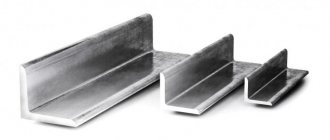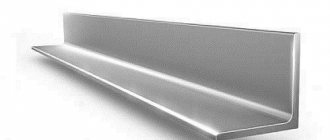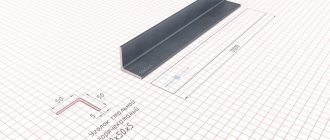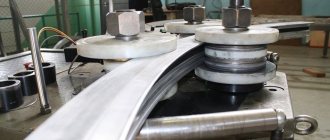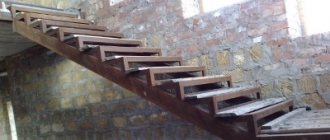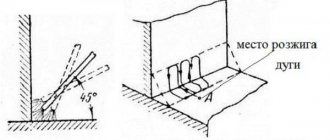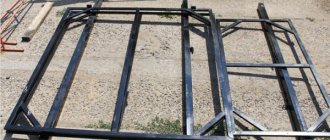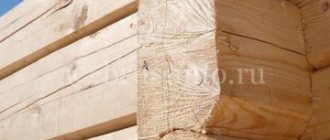A fastening angle is a connecting all-metal product for wooden structures, used to fasten elements at a right or other angle of inclination. Most often it is used to connect beams together or attach them to a load-bearing support or the frame of a building. The assembly of some types of furniture, boxes, and containers cannot be done without them.
A metal mounting angle is a plate bent at a certain angle with perforations of the same or different diameters for nails, bolts, cap screws, self-tapping screws or anchors. In most cases, they are made of low-carbon steel with a thickness of 2-2.5 mm and coated with a protective layer of zinc.
What types of plastic corners are there?
Made from lightweight but durable plastic, they are perfect for furniture installation and finishing work. The types of plastic corners for slopes are very diverse: the rich colors allow them to be used in any interior, and the width of the sides and the angle of connection to choose from provide great opportunities for decorating and eliminating construction defects (seams on the walls, uneven corners).
What sizes are plastic corners? Standard plastic corner for slopes - equilateral dimensions 20x20 mm, 25x25 mm, 50x50 mm with an angle of 90 degrees. The material is easy to cut, which allows you to adjust the dimensions to the required height. Low cost, ease of maintenance and long service life make such corners very popular during repairs.
Types of plastic corners for furniture differ mainly in color. Otherwise, they are a simple design of a bent plate with two mounting holes, designed for connecting small parts and fastening light furniture. A big advantage of some models, for example, this single white mounting corner, is the presence of a decorative plug that hides the mounting location.
Selection and application features
It is recommended to buy corners in bulk. In this situation, you can save a lot . In a store, for one corner of a standard configuration you will have to pay from fifteen to thirty rubles per piece. The cost may vary depending on the manufacturer and the material from which the product is made.
For good fastening, you also need to choose the screws and self-tapping screws wisely . Experts advise using steel screws of different diameters for installing corners. It is better not to use nails because they often suffer from corrosion, which adversely affects their performance. If you are installing corners for fixing bars in areas that will be subject to high loads, then it is better to buy long screws or self-tapping screws with strong fixation.
When choosing, be sure to pay attention to the reliability of the manufacturer . Low quality parts will quickly lose their quality and rust, weakening the entire structure.
What types of metal corners are there?
They are made of galvanized steel, which provides these parts with increased strength and corrosion resistance. Types of metal corners differ in shape, number of perforation holes and the presence of additional stiffeners. This allows the connection to withstand serious loads; such a metal corner is used when installing both large wooden beams and when attaching to concrete.
All-metal corners are used as furniture fittings, for example, this metal corner (dimensions 40x40x25) is suitable for heavy facades.
Reinforced mounting angle: product dimensions
There are no more than ten options for corner sizes, which is quite enough for any construction work.
- HxLxBxS
- reinforced corner 40x40x40x2
- reinforced corner 50x50x35x2
- reinforced corner 70x70x55x2
- reinforced corner 90x90x40x2
- reinforced corner 90x90x65x2
- reinforced corner 105x105x90x2
- reinforced corner 130x130x100x2
Small sizes are used in furniture production to create frames and joints, where the fastening point is quite small and the strength requirements are high.
In wooden house construction, the cross-section of building timber is 100 mm by 100 mm or more. To reliably connect wooden elements to each other, reinforced fastening angles 90x90x65x2 and others are used.
When installing the corners, no cutting for fasteners is required, which means there is no weakening of the structure. Installation of perforated products is carried out on top of the connected structures. Therefore, the size of the reinforced corner is selected for a specific unit: the corner does not extend beyond the wooden element and, due to the stiffening rib, provides high load-bearing capacity.
How to choose a mounting bracket for different purposes
The main requirement is that the selected part matches the expected loads. The weight of the metal corner that it can withstand must first be calculated. For example, when attaching a shelf to a wall, the calculation is as follows: 1 screw 3x16 mm can withstand up to 1 kg, 3x30 mm up to 5 kg, etc.
Please note - whichever corners (plastic or metal) you choose, do not over-tighten the mount on the wood, this can lead to cracking.
Choosing the types of corners for plastic panels is much easier - here it is enough to correctly take into account the size (height and width) and strictly follow the installation technology.
Parts with a large number of mounting holes are ideal for the manufacture of various prefabricated structures during repairs. Marking a perforated metal corner allows you to ideally select the size for creating elements from plasterboard.
Choose high-quality corners, correctly calculate the load, and then the fittings will serve you for decades!
Technological characteristics
Metal mounting angles are made of 08PS steel. On the surface of the part there are perforated holes intended for installing bolts, screws and other products.
Construction fastening equipment differs in its shape and size. It is used for special work.
Metal corners for fastening beams have the following advantages :
- Versatility. They do not require special tools. No need to use additional binding materials. Fastening is carried out with self-tapping screws or screws with nuts.
- High reliability. The fastening angle allows joining of beams with high precision. The design is durable and reliable. The reinforced metal corner, made of stainless steel, has high anti-corrosion properties.
- A large assortment. The industry produces products of different sizes. Each has an individual shape. Thanks to this variety, you can easily select the right part for construction work.
Advantages of Rusconnect
The most reliable systems are those with a vertically integrated structure. In them, products are tracked from raw materials to delivery to the final consumer. Ruskonnekt has its own production of reinforced corners. A well-functioning quality system allows you to track all stages of production and sales. The slightest deviations from a given technology immediately trigger a set of corrective measures.
Reinforced corners from Rusconnect – guaranteed quality. Take it and don't hesitate. The manufacturer values its reputation.
Peculiarities
Unlike conventional fasteners, reinforced corners have a special stamping at the bend - a stiffening rib. This increases the permissible loads that can be applied to the assembly without causing visible deformation.
How long does a reinforced corner last?
It depends on the type of force applied:
- The main effect of the rib is to increase the bending rigidity of the product. In this case, the perceived bending moment increases many times over. Light shelves, comparable in width to the length of the horizontal part of the corner, can be attached to the wall without additional fixation;
- Another factor is the increase in the area over which the shear force is perceived. Here the permissible loads increase approximately 1.5 times.
Reinforced corner KPL RUB 688.20 / pack
Perforated reinforced corners RKP, RKPL and RKPZ RUB 189.80 / pack
Reinforced anchor angle KKB 990.50 rub. / pack
Reinforced corner KP RUR 1,533.20 / pack
Fastening rules
To securely fix the perforated corner on the surface, you need to study the instructions in detail and get all the necessary tools (spatulas, brushes, rule, level, etc.).
Preparing the corner and wall for finishing
In order for plaster profiles to hold tightly and serve for a long time, it is necessary to carefully prepare the walls and especially the corner areas. Preparatory activities include the following steps:
- complete removal of the old coating or removal of all loose, poorly secured elements that may subsequently fall off with a new plaster layer;
- sealing large gaps, cracks, and other serious defects with cement-based mortar;
- cleaning the surface from any contaminants;
- priming with a primer or deep penetration primer 2 times with complete intermediate drying.
If the junction of two walls or the outer corner is severely damaged, and there is even nowhere to attach the profile, pre-plaster it, and only then attach a metal or plastic cover.
Product fastening
Using metal scissors or another suitable device, cut off a corner of the required size. The solution is applied to the corresponding section of the wall, and the mass is leveled around the perimeter with a special corner spatula. The layer after attaching the profiles should be located on the same level as the rest of the plastered wall.
While the mortar has not yet hardened, apply the product and press it so that the plaster appears from the holes. Level the composition over the surface of the part or mesh (if a corner with a mesh is used). Using a level, the correct location of the profile in relation to the beacons is verified.
Hold heavy metal pads with your hand while working, otherwise they will slide down. If necessary, they are additionally secured. This stage of work will also be required if the walls are plastered in too thin a layer and there is no way to level the profiles. The order of fixing the parts will be as follows:
- apply a corner to the joint of the walls, make markings for fasteners;
- use a drill to make holes on the wall and insert plastic dowels into them;
- fix the corner with self-tapping screws, screws;
- The fasteners are treated with an anti-corrosion compound so that they do not subsequently rust from the plaster.
Cleaning the construction base and leveling
After fixing the corners, wait until the solution completely hardens. Then the entire surface is plastered along the beacons, simultaneously closing the corner and leveling the new layer with a spatula. Let the plaster dry again and rub it with a construction trowel. The tool is carefully moved over the area of the perforated corner so as not to damage it. The inner corners are rubbed with a coarse grater.
The use of plaster corners can significantly improve the quality of finishing and help facilitate the work of the craftsman. They are recommended for use by both beginners and professionals, as they have real practical value.
Stamping of fastening corner
On the GOSKREP website you can watch a short video about how the corner is produced.
- The raw material for production is cold-rolled galvanized steel, corresponding to GOST 14918-80. The metal comes in rolls 125 mm high; each weighs about two tons.
- Having been installed on unwinding equipment, the sheets are cut into strips (a special name for the resulting strips or tapes) of standard product width C (see figure above): 35, 53, 40, 65, 105 mm or another, if there is a corresponding stated requirement.
- The resulting strips are placed in stamping equipment, where holes of different diameters, characteristic of a fastening angle, are made.
- Perforated strips are cut into plates simultaneously with the formation of holes or on separate equipment.
- The final action is to bend the plate at a right angle with evenly spaced corner flanges at distances A, B.
What should I attach the mounting brackets to?
For reliable fastening to wood, it is recommended to use universal yellow or special self-tapping screws, as well as rough nails with a high pull-out and shear load. If it is necessary to fix the beam on a concrete base, use a corner fastener with large perforations and anchor bolts.
If you need reinforced fastening corners for the construction of a frame house or the construction of a roof truss system, then in our Krepkom store you will find high-quality and inexpensive fasteners that can ensure the reliability and long service life of critical corner joints.
Classification of fasteners
Metal fasteners used to connect several parts are divided into two groups :
- All metal. These products are used wherever it is necessary to fasten standard-sized wooden beams.
- Separate. This prefabricated structure is used for fastening non-standard products. The reliability of such models is inferior to all-metal structures. Therefore, their use requires preliminary calculation of rigidity.
In addition to differences in size and shape, the fasteners differ in thickness, which can be 2-3.5 mm. The most popular fasteners in construction are :
- Reinforced fastening. The product has several stiffening ribs. They make it possible to connect large beams with various materials.
- Equilateral reinforced. It has the shape of a plate with edges bent at an angle of 90 degrees. There are perforated holes on the surface of each side. Used for fastening wooden beams in places where there is no high deflection load.
- Anchor fastening. The product is distinguished by its shape and disproportionate dimensions. The length and width are the same, but the height can have several sizes: 80-200 mm.
- Asymmetrical corner. It differs from the anchor one in its width. The part creates a right angle relative to the mounting plane.
- 135 degree angle mount. Used to connect wooden beams at a certain angle. Typically used to fasten roof rafters.
- Corner in the shape of the letter Z. Special reinforced product. Used to connect building materials located in different planes (parallel). The device can be used to connect beams of non-standard sizes.
How to attach reinforced corners for wood and concrete
Attaching to a wooden surface usually does not cause difficulties. The recommendations for determining load capacity should be followed. The screws are staggered to avoid the same grain line. Uneven-flanged reinforced corners for wooden structures are used under significant loads. They are attached to the wall with the long side. For concrete, pre-drill holes for dowels. Recommended effort increases by 20-25%.
Types of profiles depending on the material of manufacture
The corner for plastering corners can be made from different materials. Wooden products are practically never found on sale. The most popular among builders are plastic and metal accessories.
Metal
Such products are used mainly under latex, acrylic or gypsum plasters. They can be made from aluminum and galvanized steel. Aluminum is a soft metal, but it is practically not susceptible to corrosion and has sufficient strength. You just need to cut it more carefully so as not to bend it.
Aluminum profiles last for many years, have minimal weight and do not place additional load on building foundations. They are easy to install, even a beginner can handle the job, and the price of the products is quite affordable. Only the impact resistance of aluminum is not too high, so you should not subject the treated areas to excessive mechanical stress.
Otherwise, the plaster layer may crack, the profile will bend, and the repair will have to be done again. Therefore, aluminum corners are not used in workshops, industrial enterprises, warehouses, or shops.
A galvanized corner is much more expensive than an aluminum one. This is due to a more expensive production technology, including the application of a zinc layer. The coating prevents metal corrosion, but if the top layer wears away from damage, rust can still occur. To reduce the risk of rusting, galvanized corners should not be cut with a grinder. For “cutting” only metal scissors are used, which are more gentle.
The advantages of galvanized profiles are:
- high reliability;
- long service life (subject to installation rules);
- good shock tolerance.
The disadvantages of profiles are associated with their greater weight than aluminum. Due to their mass, if fastened insufficiently, they can slide down and come off over time.
Plastic
In terms of strength, plastic is inferior to aluminum and steel, because with a strong impact it does not just bend, but cracks or even falls apart. You have to buy rather thick products, and apply the plaster in a thin layer. However, plastic linings are indispensable under a number of conditions. For example, in rooms with high humidity they will be the most suitable option for edging corners. They are completely corrosion-resistant and will not rust even after many years.
Plastic is considered chemically inert; it reacts poorly to the presence of various chemicals. This allows the use of plastic profiles in workshops, production and where there is a risk of contact with caustic substances. The material even withstands interaction with alkalis and acids, of course, taken in small concentrations. Metals in such conditions will quickly become unusable.
Plastic is a lightweight material, so it does not weigh down the structure. You can easily make a curved corner (arc) from it, with almost any bending radius. The integrity of the product will not be compromised if handled carefully. To cut a plastic profile, you can use a simple stationery knife and even break it with your hands, after aligning the edges with pliers.
Design features and dimensions of the mounting angle
Material. Fastening angles are made of cold-rolled galvanized steel by metal stamping (steel grade 08PS, GOST 14918-80). Thanks to 2 mm thick sheet steel, the connecting elements create reliable joints in structures.
The hot-dip galvanizing method gives the fastening an aesthetically pleasing appearance and helps protect the metal from corrosion, extending the service life of perforated products. In addition, the anti-corrosion zinc coating makes it possible to install fasteners outdoors during external work.
The dimensions of the mounting angles vary between 50-130 mm. The following standard designations for corners (AxBxCx2mm) are presented on the GOSKREP website:
- 50x50x35x2
- 70x70x53x2
- 90x90x40x2
- 90x90x65x2
- 105x105x90x2
- 130x130x100x2
On the construction market there are also products with a thickness of 1.8 or 2.5 mm. This is acceptable. The main thing is that it corresponds to the stated sizes.
In pursuit of saving money, some manufacturers use steel with a thickness of 1.8 mm, while specifying the standard 2 mm. A difference of 10% is significant during calculation, installation and further operation. The same thing happens with the dimensions of the corner, which are already considered generally accepted in construction. Avoid using products where the designation differs from the actual dimensions of the fastener.
Holes. On each side of the perforated corner there are one, three or five (KU 130x130x100x2) large holes, four or more with a smaller diameter.
The following construction fasteners are used for fastening the corner: a plumbing screw (capercaillie) in large-diameter holes; universal screws (SHUTS, SHUZH), wood screws for small holes.
Main types:
Household corners are perforated fasteners with low load-bearing capacity, used for home repairs, restoration work, finishing rooms, assembling furniture, shelves, chests, and drawers.
Window flat corners are corner connectors for joinery and carpentry, allowing you to fasten wooden elements lying in the same plane at an angle of 90°. They have long been used to connect and strengthen window frames, frames, shutters, gates, and door panels.
Construction corners are universal fasteners for timber structures. Available in standard and reinforced versions. Reinforced corners are distinguished by the presence of one or more stiffening ribs. They are installed in critical nodes of wooden structures, namely where the fastening is affected by longitudinal and transverse loads. They are used in the construction of rafter systems, interfloor ceilings, and stairs.
Modifications:
To solve all existing problems with corner fastening, manufacturers produce perforated corners for timber of various shapes and sizes: wide, narrow, equilateral, asymmetrical, Z-shaped, anchor, sliding, flat, with an angle of inclination of 135° (for rafters). When choosing, it is important to choose the correct size of the connector - its sides must match the size of the workpieces for fastening.
